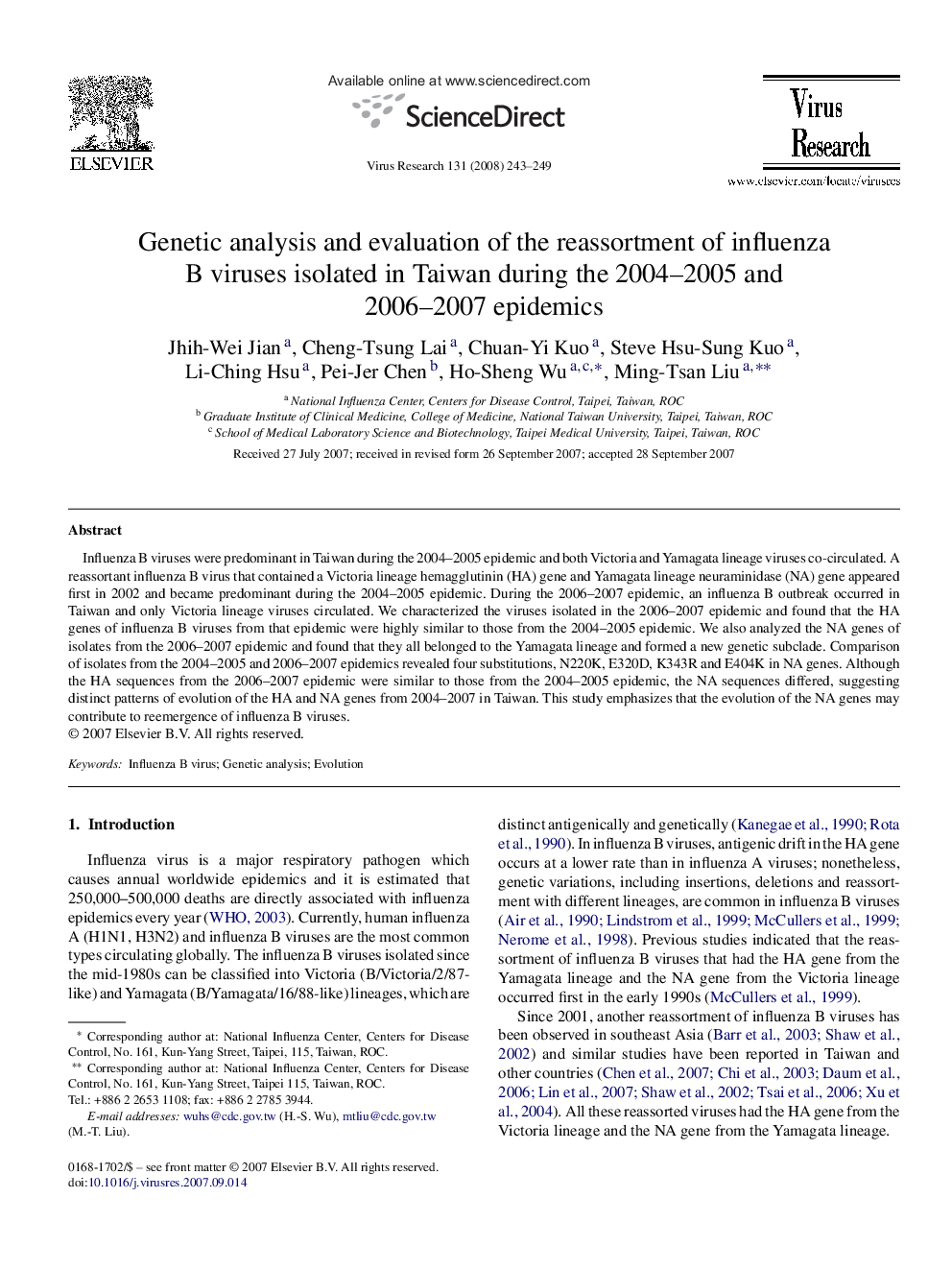| Article ID | Journal | Published Year | Pages | File Type |
|---|---|---|---|---|
| 6143601 | Virus Research | 2008 | 7 Pages |
Abstract
Influenza B viruses were predominant in Taiwan during the 2004-2005 epidemic and both Victoria and Yamagata lineage viruses co-circulated. A reassortant influenza B virus that contained a Victoria lineage hemagglutinin (HA) gene and Yamagata lineage neuraminidase (NA) gene appeared first in 2002 and became predominant during the 2004-2005 epidemic. During the 2006-2007 epidemic, an influenza B outbreak occurred in Taiwan and only Victoria lineage viruses circulated. We characterized the viruses isolated in the 2006-2007 epidemic and found that the HA genes of influenza B viruses from that epidemic were highly similar to those from the 2004-2005 epidemic. We also analyzed the NA genes of isolates from the 2006-2007 epidemic and found that they all belonged to the Yamagata lineage and formed a new genetic subclade. Comparison of isolates from the 2004-2005 and 2006-2007 epidemics revealed four substitutions, N220K, E320D, K343R and E404K in NA genes. Although the HA sequences from the 2006-2007 epidemic were similar to those from the 2004-2005 epidemic, the NA sequences differed, suggesting distinct patterns of evolution of the HA and NA genes from 2004-2007 in Taiwan. This study emphasizes that the evolution of the NA genes may contribute to reemergence of influenza B viruses.
Related Topics
Life Sciences
Immunology and Microbiology
Virology
Authors
Jhih-Wei Jian, Cheng-Tsung Lai, Chuan-Yi Kuo, Steve Hsu-Sung Kuo, Li-Ching Hsu, Pei-Jer Chen, Ho-Sheng Wu, Ming-Tsan Liu,
